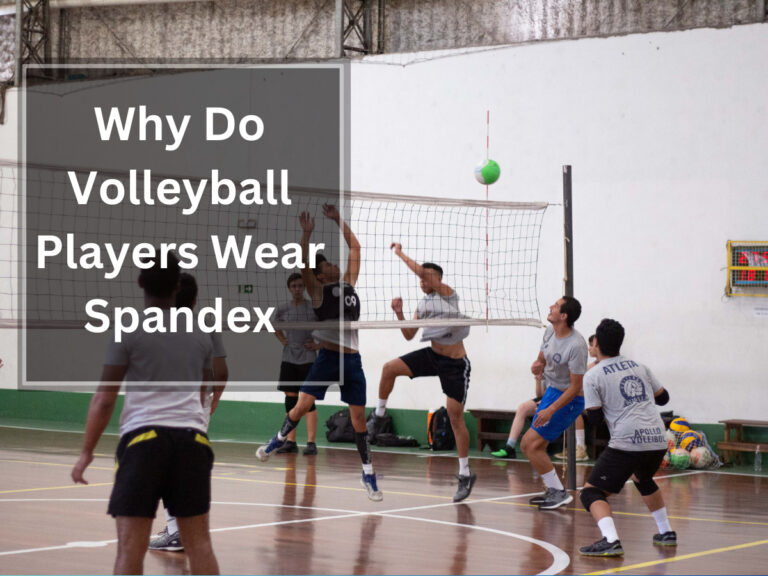What Are The Rules Of Volleyball ? All You Should Know

Volleyball is a fast-paced and dynamic sport that requires skill, strategy, and teamwork. To fully understand the game, it’s important to familiarize yourself with the rules. Here are the fundamental rules of volleyball:
The Court: A volleyball court is rectangular in shape and measures 18 meters long and 9 meters wide. It is divided into two equal halves by a net that stands 2.43 meters high for men and 2.24 meters high for women.
- Teams: Each team consists of six players on the court at a time. There are also substitutes on the bench who can be rotated into the game.
- Serving: The game begins with a player from one team serving the ball by tossing it into the air and hitting it over the net into the opponent’s court. The server must stand behind the end line while serving.
- Rally: Once the ball is served, both teams have three hits to return the ball over the net. The hits are typically a bump, set, and spike, but players can use any legal combination of hits.
- Rotation: After winning a rally and earning the right to serve, the team rotates clockwise, with each player moving to the next position. This ensures that all players have an opportunity to serve and play in different positions.
- Scoring: Points are awarded to the serving team when the opposing team fails to return the ball or commits a violation. A point is also awarded if the ball hits the ground within the opponent’s court. The first team to reach 25 points with a two-point advantage wins the set. Matches are usually best-of-five sets.
- Violations: There are several violations in volleyball, including touching the net, stepping over the center line, and carrying or holding the ball. These violations result in a point for the opposing team.
- Substitutions: Teams are allowed to make substitutions during the game, but the number of substitutions is limited. Substitutions can only be made when the team is in possession of the serve.
Understanding these basic rules will give you a solid foundation to enjoy and participate in the game of volleyball. So, whether you’re a player or a fan, get ready to experience the thrill of this exciting sport!
Table of Contents
Volleyball Rules
Scoring and Point System
The scoring and point system in volleyball is based on rally-point scoring. A point is awarded to the team that wins each rally. Every time the ball is served, both teams have an opportunity to score a point.
Scoring techniques include attacking the ball over the net to land it in the opponent’s court or forcing the opposing team into making mistakes. Defensive strategies aim to prevent the opposing team from scoring by blocking their attacks and digging their spikes.
On the other hand, offensive plays involve setting up plays to create opportunities for hitters to score points. The objective of each team is to reach a predetermined number of points first (usually 25) and win sets within a match.
This creates an exciting and fast-paced game where every rally counts towards determining who will come out on top.
Team Composition and Positions
With six players on a team, each with unique positions and roles, the excitement of volleyball intensifies as the players strategically maneuver to dominate the court.
Team communication is vital in keeping everyone synchronized and aware of their responsibilities.
Defensive strategies play a crucial role in protecting the court and preventing the opposing team from scoring. This includes techniques such as digging, diving, and extending to make successful defensive plays.
On the offensive side, teams employ various strategies to outsmart their opponents. These can include setting up quick attacks, utilizing different offensive systems like 5-1 or 4-2, and executing well-coordinated plays to confuse the defense.
By effectively utilizing team communication and employing both defensive and offensive strategies, teams can maximize their chances of success on the volleyball court.
Serving Rules
While playing a lively game of volleyball, it’s crucial to know the serving rules so you don’t commit any foot faults or serve out of order. Here are some important things to keep in mind when it comes to serving:
Serving Techniques: There are various serving techniques such as the float serve, jump serve, and topspin serve. Each technique has its own advantages and requires different skills.
- Serving Strategies: You can use serving strategies like targeting specific players or areas on the court, varying your speed and placement of serves, or trying to create confusion for the receiving team.
- Serving Rotation: In volleyball, players rotate positions after each side-out. This means that the server changes with each rotation, allowing every player on the team to have a chance to serve.
By understanding these serving rules and incorporating different techniques and strategies into your game, you can become a valuable asset to your team while enjoying the excitement of volleyball.
Passing and Setting Techniques
To improve your passing and setting techniques and become a more effective player on the court, it is important to focus on several key aspects. First and foremost, communication strategies play a vital role in successful passing and setting. Constantly communicate with your teammates, calling for the ball and letting them know where you intend to set it. This will ensure better coordination and increase the chances of successful plays.
Defensive positioning is another crucial factor in passing and setting. It is important to be in the right position to receive the ball. Stay low and be prepared to move quickly in any direction. This will enable you to react swiftly and effectively to incoming passes.
When it comes to offensive strategies, accuracy is key. Focus on delivering accurate sets that give your hitters the best opportunity to attack. Work on consistency in both power and placement of your sets. This will allow your hitters to make better contact with the ball and increase their chances of scoring.
In addition to accuracy, it is also important to vary your sets. Use different tempos and locations on the court to keep the opposing team guessing. This will make it harder for them to defend against your attacks and increase your team’s chances of success.
By honing these passing and setting techniques, you will greatly contribute to your team’s success on the volleyball court. So, practice these skills diligently and watch your game improve.
Attacking and Blocking Rules
Attacking and blocking require players to be the wall that stops opponents in their tracks. When it comes to offensive strategies, teams can employ various techniques to outsmart their opponents.
One common offensive strategy is the quick set, where the setter delivers a fast pass to catch the opposing blockers off guard.
Another effective technique is the cross-court attack, which involves hitting the ball diagonally from the point of attack, making it harder for defenders to anticipate and block.
On the defensive side, players use a range of defensive techniques and formations to prevent their opponents from scoring.
This includes techniques such as digging low balls, dinking soft hits into opponent’s court using fingertips, diving to increase forward range of motion, and extending left or right during defensive moves.
Defensive formations like double block involve two players working together at the net to intercept incoming attacks.
Mastering these offensive and defensive skills will make you an invaluable asset on any volleyball team.
Court Boundaries and Net Height
Now that you have a good understanding of attacking and blocking rules in volleyball, let’s dive into court boundaries and net height.
Court measurements play a crucial role in ensuring fair play. A standard volleyball court is 30 by 60 feet and divided into two equal halves by a center line. Internationally, the court measures 9 meters by 18 meters. It’s important to know these measurements to position yourself correctly during the game.
Rotation rules are another key aspect of volleyball. As the game progresses, players rotate positions on the court clockwise. This ensures that each player has an opportunity to play different positions and contribute to their team’s success.
Lastly, let’s talk about the libero position. The libero is a specialized defensive player who wears a different color jersey. They have certain limitations and advantages within the game, such as being able to replace any back-row player without counting towards substitutions. Their primary role is to excel in passing and digging skills, providing stability to their team’s defense.
Understanding court boundaries, rotation rules, and the libero position will give you an edge in playing volleyball effectively. So stay focused and keep practicing!
Violations and Penalties
Avoiding violations and penalties is crucial in maintaining a fair and competitive game. Therefore, it is important to be mindful of your foot placement, double hits, and crossing the center line during play.
Player conduct violations can result in penalties. For instance, unsportsmanlike behavior can lead to yellow cards, while more severe offenses may result in red cards. Respecting the officials’ decisions and refraining from arguing or showing dissent is essential.
Timeouts and substitutions are allowed during certain situations, but it is important to follow the rules regarding when and how they can be used.
Equipment violations, such as wearing jewelry or improper uniforms, can also lead to penalties. It is necessary to comply with the regulations set by the governing body to ensure a smooth and uninterrupted game.
Frequently Asked Questions
What are the dimensions of a volleyball court?
A volleyball court is like a battleground, with its dimensions measuring 30 by 60 feet. These measurements define the boundaries where fierce volleys and strategic plays unfold, making it the perfect stage for competitive action.
How many sets are typically played in a volleyball match?
In a volleyball match, points are scored when a team successfully sends the ball over the net and it lands in the opponent’s court. Indoor and beach volleyball differ in terms of court size and number of players. The basic skills required to play volleyball include serving, passing, setting, attacking, blocking, and digging.
Can a player hit the ball twice in a row?
Yes, a player can hit the ball twice in a row, but it is considered a violation in volleyball. The referee will make the decision and penalize the team accordingly. It’s important to follow the rules and strategize effectively during the game.
What is the role of a libero in volleyball?
The libero is a specialized defensive player in volleyball. Their role is to excel in passing, digging, and serving receive. They wear a different colored jersey and can replace any back-row player without counting as a substitution.
Can a player touch the net during play?
During a volleyball game, players must avoid touching the net at all costs! It’s like a forbidden force field. If you dare to touch it, consequences will follow. Net contact during blocking is also strictly regulated.










